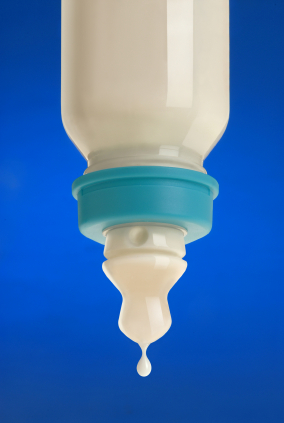Invaded stomach secretes shield
Helicobacter pylori — a bacterial species found in the stomachs of more than half of all humans — induces a chronic inflammatory response (gastritis) that increases the risk for gastric cancer. But only a fraction of infected persons will develop cancer.
Richard Peek, M.D., and colleagues are exploring host proteins that may influence cancer development. They previously showed in vitro that H. pylori increases the expression of MMP-7, a protein that participates in tissue remodeling and is present at high levels in gastric cancers. To further define MMP-7’s role, the researchers studied H. pylori infections in mice missing MMP-7. They found that infection caused more severe gastric inflammation in these mice than in normal mice, that this response involved Th1 and Th17 immune system signaling pathways, and that these mice had higher rates of stomach cell proliferation and death.
The findings, reported in the Jan. 1 issue of Cancer Research, suggest that H. pylori-mediated induction of MMP-7 may protect the stomach lining from processes that promote cancer development.
— Leigh MacMillan
Fine-tuning addiction circuitry
Changes in brain signaling in key “reward” systems are linked to anxiety disorders and addiction. Danny Winder, Ph.D., and colleagues have been probing the signaling circuits in one such brain region, the BNST, to identify new targets for treating addiction and mood disorders.

The researchers previously demonstrated that receptors activated by different neurotransmitters induce a lasting change in neuronal excitability called long-term depression (LTD) in the BNST. Now they report that, in contrast to current thinking, the two receptors (alpha1-AR and mGluR5) induce LTD by different intracellular signaling mechanisms and are “tuned” to different environmental stimuli. Restraint stress and chronic alcohol exposure disrupt alpha1-AR-induced LTD, whereas cocaine disrupts mGluR5-induced LTD.
The studies, described in the Proceedings of the National Academy of Sciences, show that stress and drugs-of-abuse produce long term changes in brain function by affecting different signaling mechanisms. The findings suggest the potential for developing finely tuned therapeutics that impact only select signaling pathways.
— Leigh MacMillan
Molecular clue to milk loss
Mammary gland cells that produce milk undergo rapid cell division and differentiation during pregnancy and lactation. As lactation ends, milk-producing cells die, the gland shrinks, and milk production ceases (involution). Milk loss is a significant problem in mastitis, an infection of the mammary glands.

Fiona Yull, D.Phil., and colleagues now show that a protein called nuclear factor kappa B (NF-kB) is a key regulator of milk production in mice. They found that NF-kB activation in the mammary epithelium during involution caused a more rapid loss of milk and glandular tissue than in control animals. Activating NF-kB during lactation resulted in similar milk loss and cell death.
Additionally, injection of a bacterial toxin (to mimic mastitis) caused NF-kB activation and milk loss; inhibiting NF-kB decreased mastitis-associated milk loss. The results, in the January Journal of Cellular Physiology, suggest that targeting NF-kB signaling may provide a strategy for preventing or treating mastitis in humans and in dairy animals, where such infections have significant economic impact.
— Melissa Marino
Wound healing without a trace
In adults, wounds that damage the deep skin layer (the dermis) often lead to an ugly and sometimes debilitating scar. Interestingly, wounds in the embryo and fetus heal scar-free. This scarless healing is associated with lack of signaling through the transforming growth factor-beta (TGF-ß) pathway.

To further study the role of TGF-ß signaling in wound healing, Neil Bhowmick, Ph.D., and colleagues developed a novel mouse model that lacks the TGF-ß type II receptor in dermal fibroblasts — the cells that produce collagen and other extracellular matrix components that contribute to scar formation. They found that full thickness wounds in these mice showed accelerated wound closure, reduced collagen deposition, and increased recruitment of immune cells (macrophages) to the wound.
The results reported in the January issue of the American Journal of Pathology demonstrate that TGF-ß signaling in the dermis is central to scarring and may be a target for treatments to reduce scarring and promote wound healing.
— Melissa Marino
We welcome suggestions for research to highlight in Aliquots. The items should be primary research articles (no reviews, editorials or commentaries) published within the last two months in a peer-reviewed journal. Please send the article citation (PDF if available) and any other feedback about the column to: aliquots@vanderbilt.edu.
Past Aliquots
June 22, 2012
June 8, 2012
May 11, 2012
April 27, 2012
April 13, 2012
March 30, 2012
March 16, 2012













